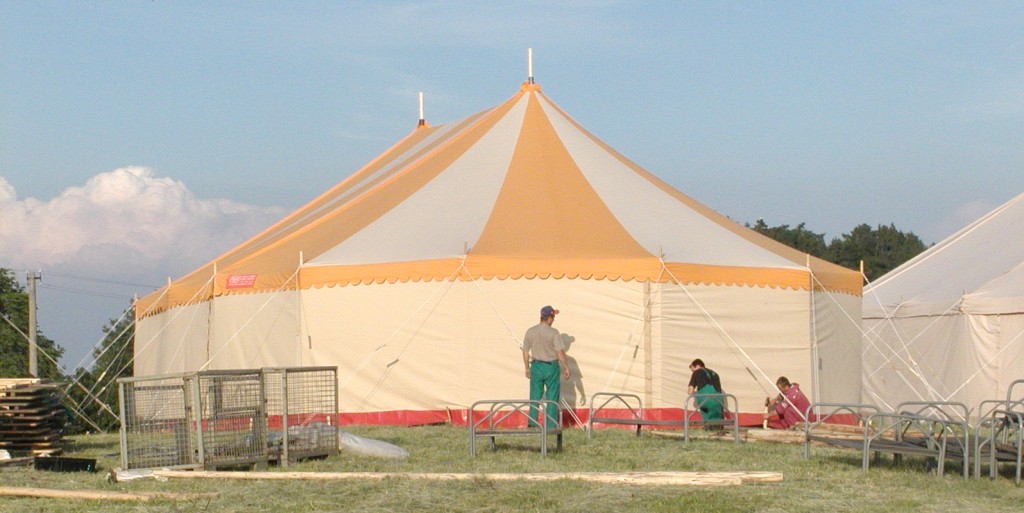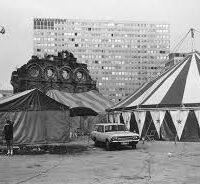The history of the festival and play tents
The shape of our big top comes from the traditional shape of the circus tent. The circus tent, also called Chapiteau, was derived from the French chapiteau = capital and is usually a tent with a round or oval floor plan. It serves the circus as a venue for its performances. The technology for transportable tents of this size has only been around since the end of the 19th century. Previously, circus performances took place in permanent theater buildings or in show booths.
Because of its enormous size, the tent roof consists of various individual tarpaulins, which are rolled or folded and transported and put together at the venue. At the beginning of the 20th century they were still made from pure cotton fabric. Due to their size, the tarpaulins of today's circus tents consist almost exclusively of fabric-reinforced PVC.
The tent is supported in the middle by masts that were initially made of wood, but are now made of steel. The most widespread are circus tents with four masts (four masters). Circuses used to travel from place to place with eight to twelve masts.

At the outer edge, the tent roof is additionally supported by side poles to which the round screen is attached below. The roof tarpaulin must also be supported between the main masts and the side bars. Storm poles are used for this, but they restrict the view. That is why some circuses have been doing without it for some time and also tension the roof tarpaulin from the outside with ropes. This construction is often incorrectly referred to as a "self-supporting big top".
The masts are braced with steel ropes, which are tensioned by gripping hoists or pulleys. Steel anchors serve as fastening points. The tarpaulins are now tensioned with straps made of polyester fabric, with the tent anchors also serving as anchor points.


